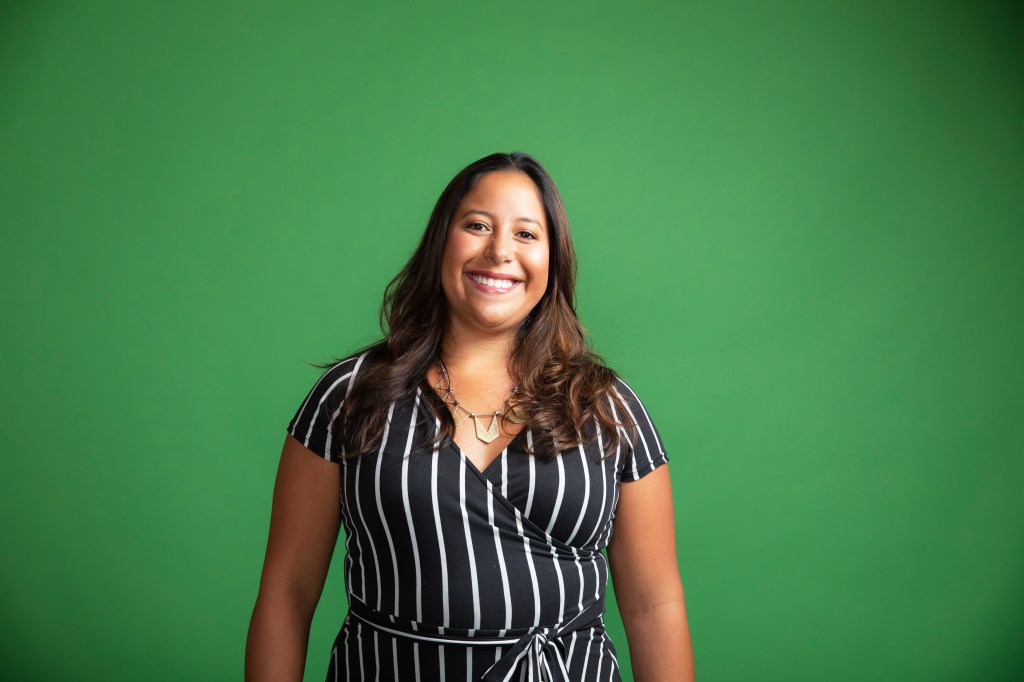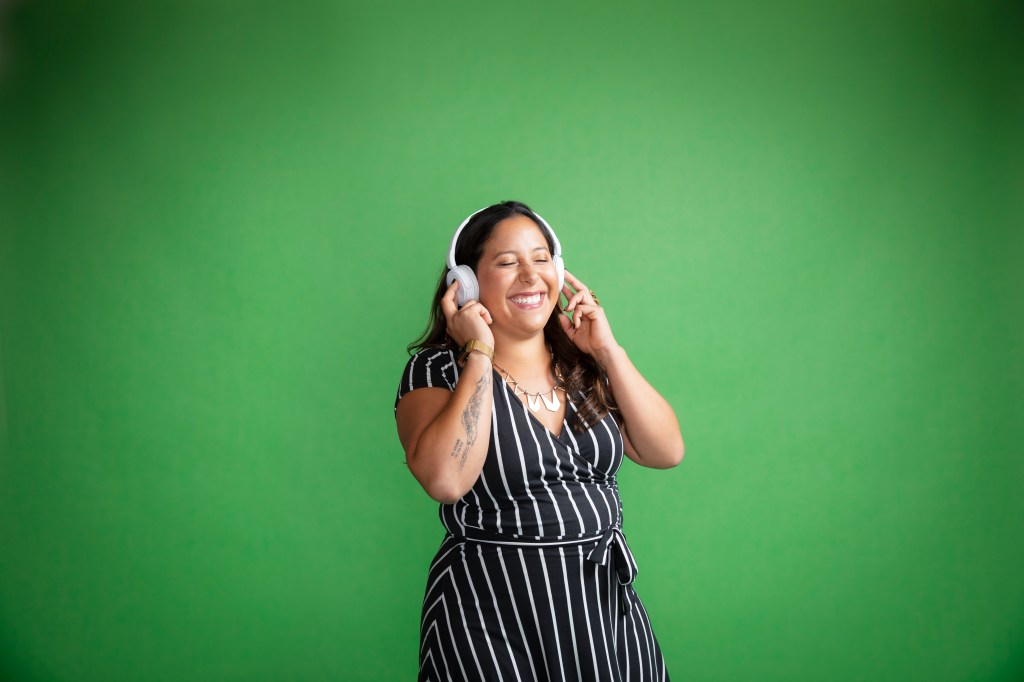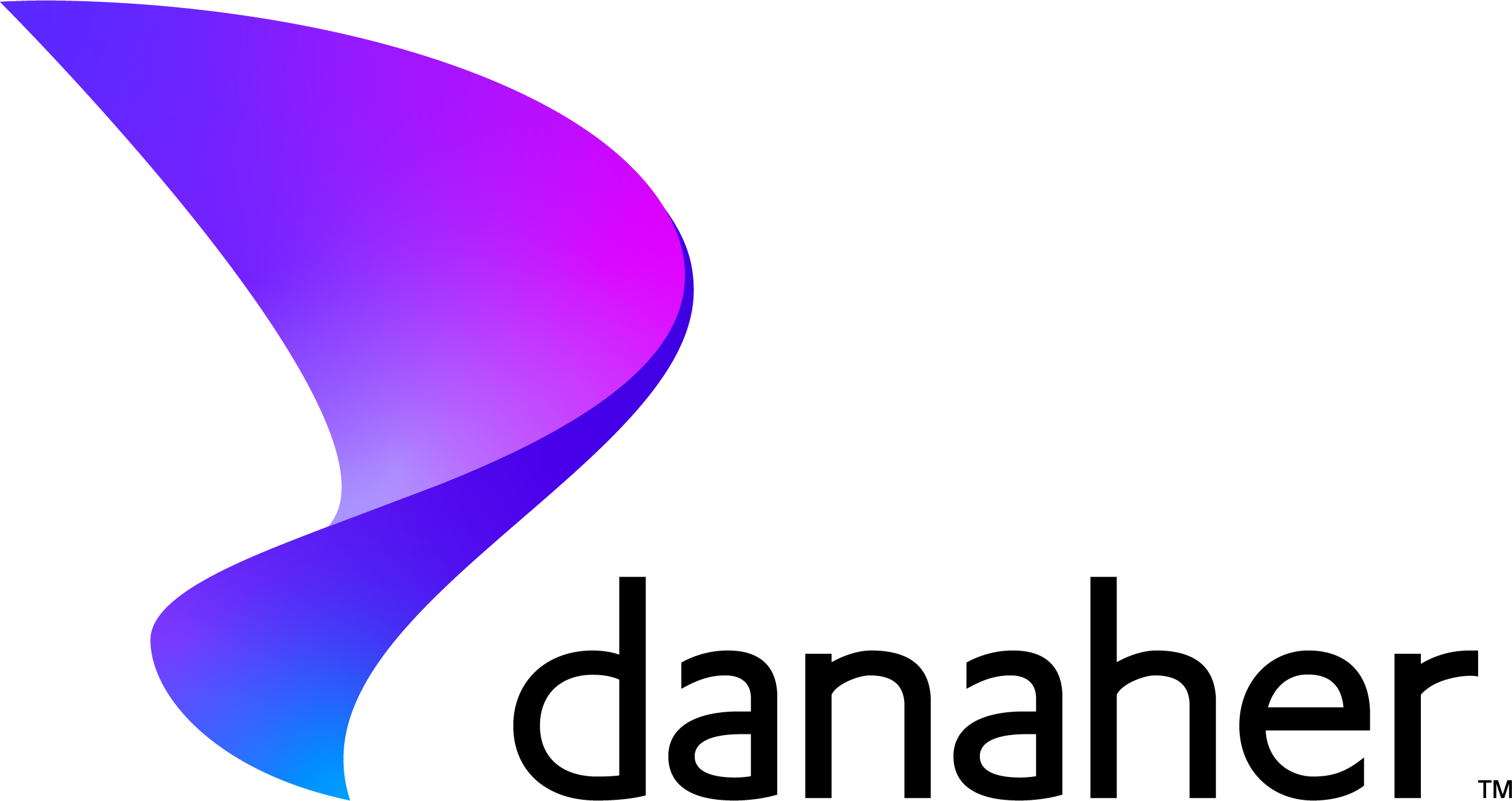From teaching elementary school students as an AmeriCorps member to helping young professionals develop leadership skills, Tam Emerson has spent her career working to support people from underrepresented communities—and now she’s continuing that work at Pall. Below, Tam reflects on what drew her to Danaher and shares some of the “scary but exciting” changes she’s making, both in her role as Talent + Culture Strategy Program Manager and as a member of the LGBTQ+ Friends Steering Committee.
What do you do at Pall?
My title is Talent and Culture Strategy Program Manager, but informally we think of my role as Culture Lead. Most of what I work on is in the categories of inclusion, engagement and talent management—I try to bring those three things together holistically and think about all the ways we can align our business strategy and culture to better support our associates. Often, that’s pilot programs and other initiatives aimed at improving our processes. And on the D+I front, it’s woven into everything else. Companies have a tendency to treat inclusion as a separate project—you pop up during Pride Month or a heritage month, and then you go away. Instead, we want it to permeate the entire company culture. That’s what leads to long-term, sustainable change.

Tell us about your background and why you joined the team.
Early on in my career, I thought I’d be a teacher. I served in AmeriCorps’ City Year program right after high school and worked in a small elementary school in Roxbury, Massachusetts, which was an amazing opportunity. It was the first time I recognized that I could be a leader and that some of the difficult experiences I’d had in my life—I was born in Colombia and then adopted by white parents, so I grew up surrounded by people who didn’t look like me—could actually help me understand and show up for those students. I went to college thinking I’d teach elementary math, but I realized pretty quickly that I wanted to have a different kind of impact. So after graduation, I took a job at The Eli J. Segal Citizen Leadership Program, based at Brandeis University, running a leadership program for underrepresented and marginalized people who were early in their careers. After that, I decided to move to California to get my MBA at UC Berkeley, which is where I discovered Danaher—they were a sponsor and host for The Consortium for Graduate Study in Management’s orientation.
I got to know Nicole Wormley, Kelley Washington, Cindy Castellanos and other members of the team and was basically smitten with the idea of this organization built on continuous improvement, so I asked for an interview. I was selected for a summer internship, and honestly, I didn’t think it was for me at first. I remember telling Michelle Gao, who was my mentor that summer, that I was only there to figure out if corporate America could change and support all people—especially those from marginalized backgrounds. But every new person I talked to here made me feel more hopeful. They wanted to help Danaher walk the walk, and the company had put a lot of people in leadership positions where they could make that happen. So I was really excited when they made me an offer to join full-time after graduation. I thought, “What better place to be than a company that has work to do and is eager to do it?”
Can you give us an example of that work? What changes have you been able to make at Pall?
We’re actually about to roll out a new policy deployment that’s designed to use our talent support systems and processes in a radically different way, which we hope will help us move the needle on the promotion and retention of associates from underrepresented groups. Our VP and Danaher Business System leader, David Koch, has been a strong advocate for doing more breakthrough thinking. He understands we can’t just tinker with this and that or do another mentoring program—the things every company in America is doing. So this project came out of what we call a President’s kaizen, which is a weeklong workshop that brings together folks from across Danaher. We decided to give every Pall associate a career plan nomination (CPN), a method where managers can assess where they believe their associates’ careers could grow in five years through our company. We’ve always done them as part of our talent assessment processes, and they’re a big part of succession planning. But we didn’t do them for every role, and we kept them behind closed doors, which of course makes it much harder to identify and mitigate bias. So, one of the breakthroughs will be sharing the CPN of every associate with them to help plan their career.
Of course, the impact won’t be limited to D+I; we’re in an aggressive talent market right now, and we hope seeing the time and effort we put into their development will encourage all associates to stay. But we’re looking at it through a D+I lens, as well, because our data tells us many associates from marginalized populations are in roles that didn’t previously get CPNs. This will drive equity by helping make sure they have every opportunity to grow.
The new policy rolls out in the next couple of months, and we’ll be holding ourselves accountable—watching metrics on turnover, retention, engagement and promotions. It’s scary, like any big change. But it’s exciting, too, and I feel honored to have played a role.

You’re a member of the steering committee for the LGBTQ + Friends associate resource group (ARG). What is that work like, and why did you want to get involved?
Before I joined Danaher, I’d spent a significant amount of time advocating for underrepresented groups, including the LGBTQ+ community. I’m a member of all the ARGs. However, I was initially wary of the steering committee opportunity, and in fact, I had turned down visibility opportunities with the ARG multiple times. One part of that was not being comfortable yet owning my own sexual orientation; I’ve since recognized that the word “pansexual” is the best fit for me. Another part of it was that I wasn’t sure I was okay being on that stage. I didn’t want my identity to be part of my job title.
But as I became more comfortable, I realized that if I wasn’t willing to do my own critical work, I would always have blind spots. So I jumped in. Now I’m the Intersectionality Lead for the committee, which is a nice way to mix an area where I can grow with an area where I feel much more confident.
I believe being on the steering committee has also been a valuable way to support my day-to-day work, as it provides a window into what Danaher’s other operating companies (OpCos) are doing. With all the different OpCos, our processes sometimes aren’t as connected as they could be. I think the team has done a wonderful job of building a community of practice, allowing us to share ideas.
Tell us about something you’ve learned since joining Pall.
I think if you’d told me five years ago how data-driven my work would be, I would have laughed at you. Going into business school, I knew it was an area that was getting lots of attention, but I didn’t feel completely comfortable in it. So at Danaher, it became one of those continuous learning opportunities—this is a data-driven company, and it was something I needed to lean into and learn if I wanted change and accountability. Now, something that felt difficult and scary has become the best tool in my toolbox.
We’re starting to track data on LGBTQ+ representation, for example, which is new for us. Previously, we only asked about the more normative identifiers like gender and race. But thanks to the work the steering committee did before I joined, we now have a field in Workday where associates can self-identify as gender nonbinary and a member of the LGBTQ+ community.
We still have a bit of a chicken-and-egg problem to work through, because many associates won’t feel safe to report that information, especially at first—yet gathering the data is part of how we push for more programs and initiatives that will increase psychological safety. But that’s where the rest of our work comes in, and why we make sure to get company leaders involved in things like the LGBTQ+ Summit and reverse mentoring. They can go back to their teams and help us create an environment where everyone feels safe being themselves.

What are you looking forward to at Pall, both at the company level and in your own career?
I’m very fortunate to be part of Danaher’s HR Development Program, which allows associates to rotate into different types of HR roles, and I am starting to think about my third progression. As much as I enjoy the D+I specialty, I do miss being in a broader role as an HR business partner, and I’d like to explore what it’s like to create change without a formal D+I title. I’m also curious about what it’s like at an OpCo of a different size.
At the company level, I’m just excited to see what happens. I’ve talked a big game about the changes we’re making, but it’s a lot of try and see. We’re experimenting. So the feeling now is, “What’s going to work? How will we move forward? Will events like the summit help us make a strategic push toward more self-identification? When CPNs are visible and universal at Pall, how will that change our company?” And the results may not be limited to Pall—Danaher is watching as we pressure-test and iterate, and some of the things we try could end up being replicated for all 80,000 associates.
In the three years I’ve been here, the opportunities I’ve had to work on high-visibility projects have already far surpassed anything I thought I’d get to do when I joined. I just want to keep that up for as long as Danaher keeps giving me the platform—and to throw down the ladder and make sure other folks from underrepresented backgrounds have a seat at the table, too.

Leave a Reply